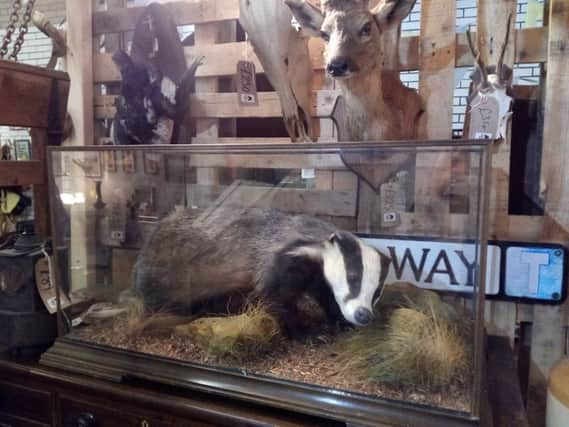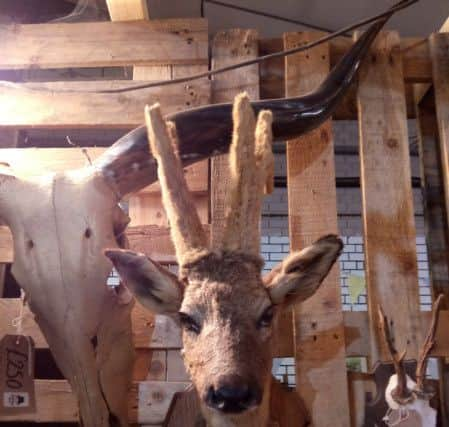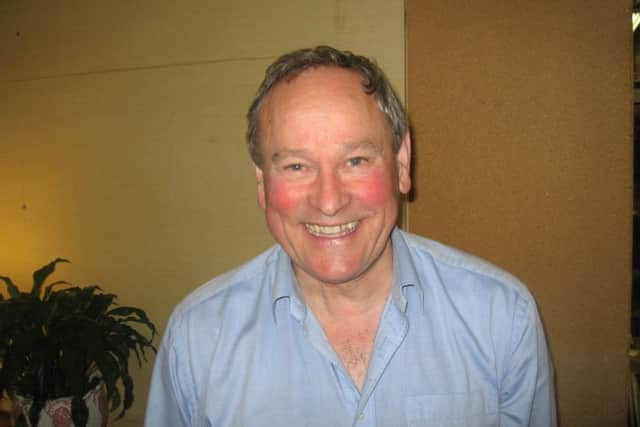The art of taxidermy isnot dying out yet


The popularity of the ‘hunting trophy’ in this country has long since died but the demand for the art of taxidermy is enjoying quite the resurgence and this is evident from the rather magnificent pieces available through dealers based in Allan Blackburn’s GB Antique Centre in Lancaster Leisure Park.
Examples include stuffed badgers, deer, squirrels and stags, all perfectly poised for art – or sheer consumerism.
Advertisement
Hide AdAdvertisement
Hide AdAllan explains: “For thousands of years taxidermy has been a popular hobby.


“But it is very much associated with the early Victorian era and there were two reasons for that.
“One is that they were great hunters and the stags’ head was the ultimate status symbol, animal heads were trophies and the second reason is the fact that people used taxidermy as a way of keeping pets, particularly animals from their land, close to the family, when they had died.
“Quite often people would have their ‘faithful friends’ such as the family dog stuffed as a sentimental keepsake to be passed on through the generations.”
Advertisement
Hide AdAdvertisement
Hide AdTaxidermy is described as the art of preparing, stuffing and mounting the skins of dead animals.


Allan says it was the 1950s when the art of taxidermy was deemed out of fashion and distasteful but more importantly there were later changes to the law, making it illegal to kill and stuff wild birds and animals.
Today there is a great deal of wildlife legislation for British taxidermists, antique dealers and auction houses to adhere to.
Allan says: “There at one time were around 3,000 taxidermists operating in the country, today that figure is more around 300.
Advertisement
Hide AdAdvertisement
Hide Ad“The laws now are very strict and it is only wild animals that have died of natural causes or road kill can be stuffed.


“There is one exception to the rule and that is fish.”
Now rather than the trophy mentality driving people to decorate their homes with lifelike reincarnations of wildlife, it is fashion once again dictating the agenda, guiding people to seek out unique pieces.
Allan adds: “Most often we have people calling looking for pieces to use as a feature for a games room.
“And from the pieces we have here, prices can range anywhere from £95 to £400, depending on the size and the animal. People can be specific in their requests for say a rabbit, a badger or a squirrel.


Advertisement
Hide AdAdvertisement
Hide Ad“Nowadays there are all sorts of modern sculptures crafted with some sort of taxidermy skills.”
Allan says a lot of the age-old taxidermy is still homed in Lancashire’s manor houses and country piles but there are modern variations, such as the work of a self-taught taxidermist and fine art graduate Nicola Hebson, who works from her studio in the Ribble Valley.
All her work is ethically-sourced either through personal commissions of animals which have died from natural causes or road-kill.
Nicola is a member of the UK Guild of taxidermists.
She says: “In order to be a good taxidermist a general appreciation and love of animals is not enough.
Advertisement
Hide AdAdvertisement
Hide Ad“You have to love and appreciate animals on an entirely different level.
“The meticulous and delicate process of bringing an animal back to life, of attempting to revive its grace, poise, and individual character, would not be possible without that love.”
The best results, Allan says, are obtained from removing the carcass from the animal as quickly as possible.
This is usually within the first hours, particularly when trying to get the best out of the fur.
Advertisement
Hide AdAdvertisement
Hide AdAllan says: “Taxidermy, when done correctly, is a real art.
“The skin of the dead animal is cleaned, preserved, and then stretched over a wire frame.
“The animal will be a perfect reproduction of its form when it was alive, which is why accurate items are so highly regarded for study as well for exhibitions.”
A whole range of materials are then used to stuff the animals from wood chips to different types of paper. The key is getting as close to that life-like form as possible, you will find eyes and noses are sometimes replaced, noses I believe in particular are quite tricky to keep intact and replacements can be leather or plastic. There is still a bit of stigma surrounding taxidermy but I look at some of the pieces and think behind each of them, there is a great story, a personality, today it is about preserving the beauty of the animals and one would hope that the next generation look after the millions of skins and mounts, which have been carefully preserved by taxidermists, as they remain an essential resource for future generations of zoologists.”
Allan has enjoyed a lengthy career in antiques.
Advertisement
Hide AdAdvertisement
Hide AdAlong with his wife, Gloria, who also shares his passion, he opened GB Antiques Centre in 1990 and that same year they were featured on Granada’s Flying Start programme.
More than 27 years later, the antiques centre has grown to more than 40,000 sq feet, boasting 100 individual dealers, making it the biggest indoor antiques and furniture centre in the country.
Allan also features on BBC Radio Lancashire’s afternoon show twice a month, giving valuations on listeners’ collectables.